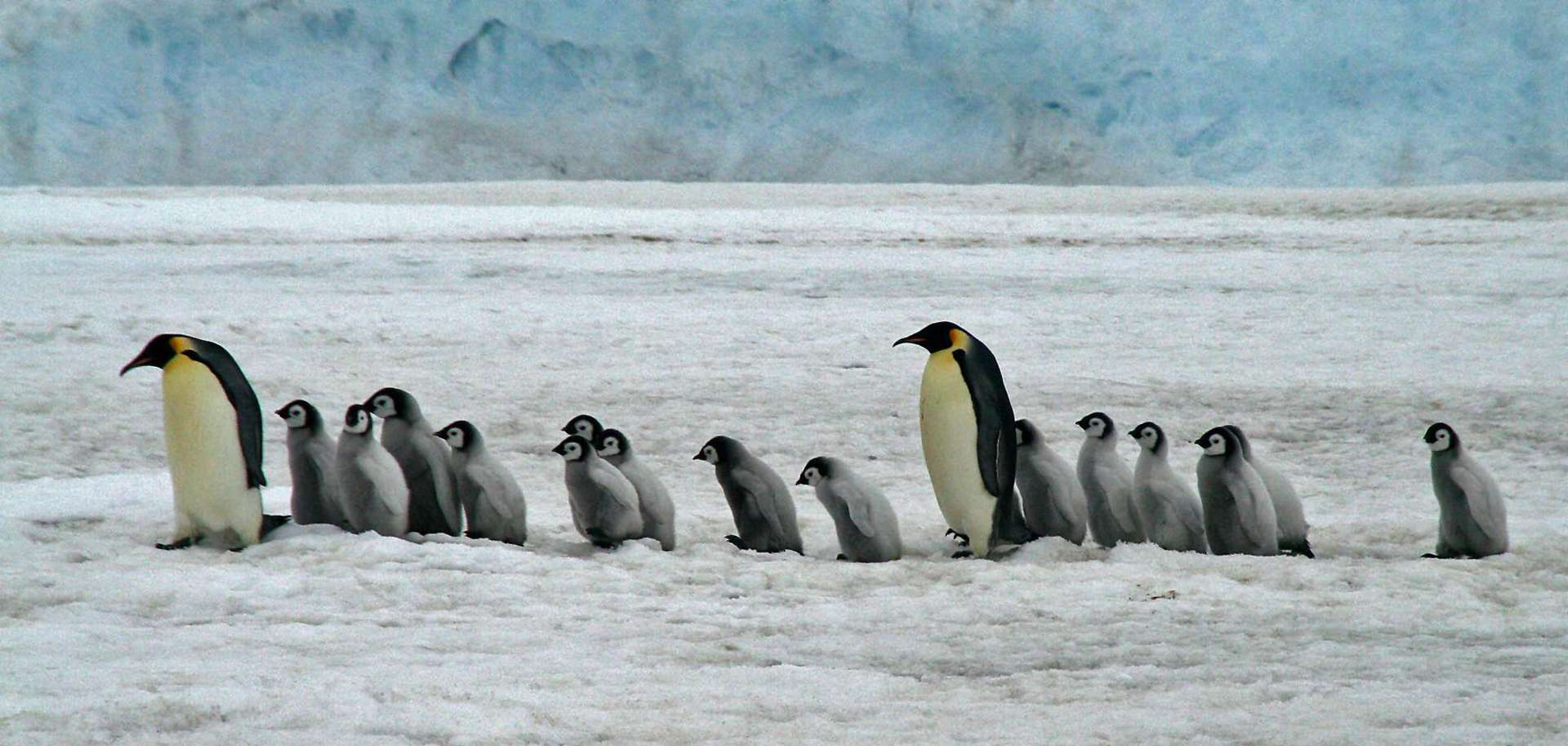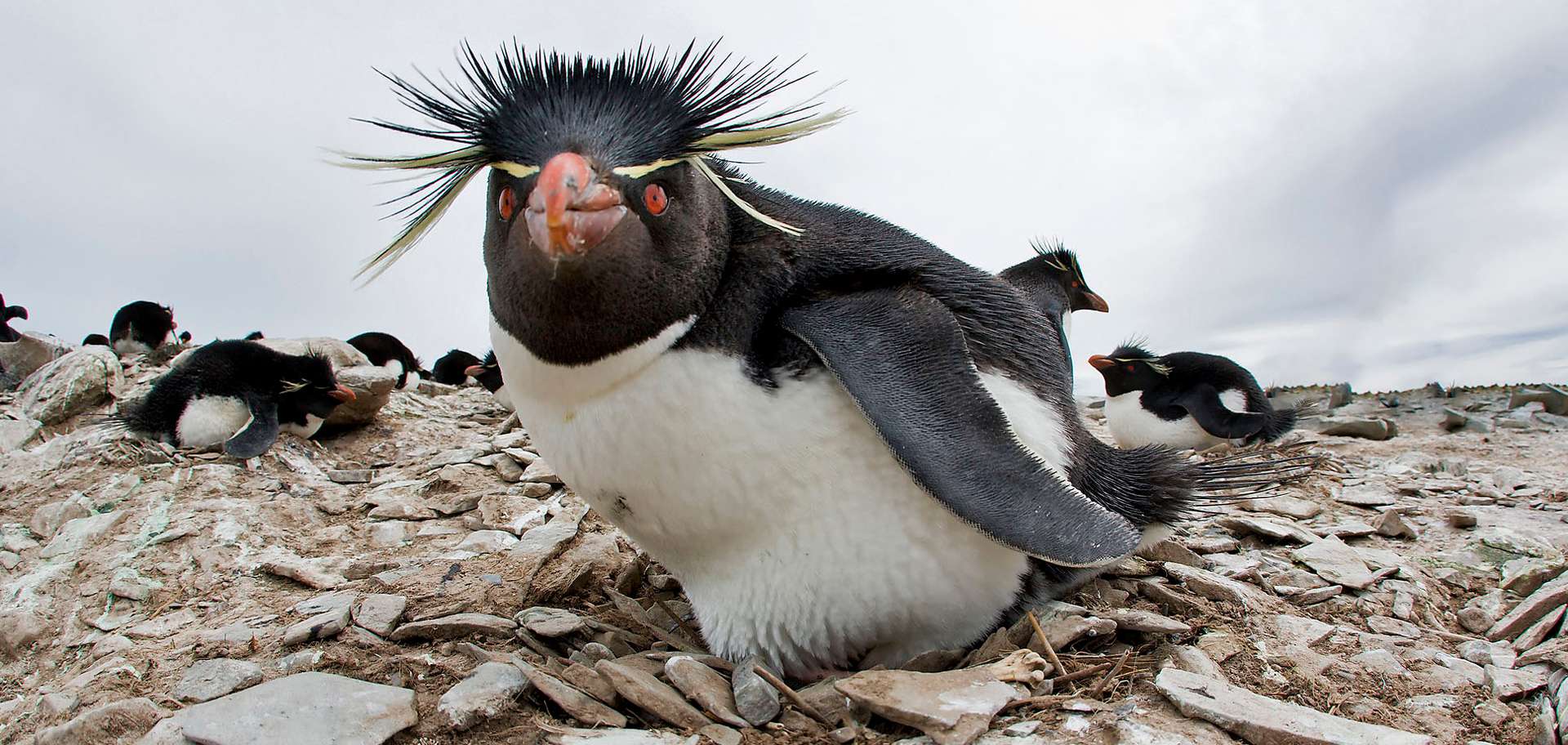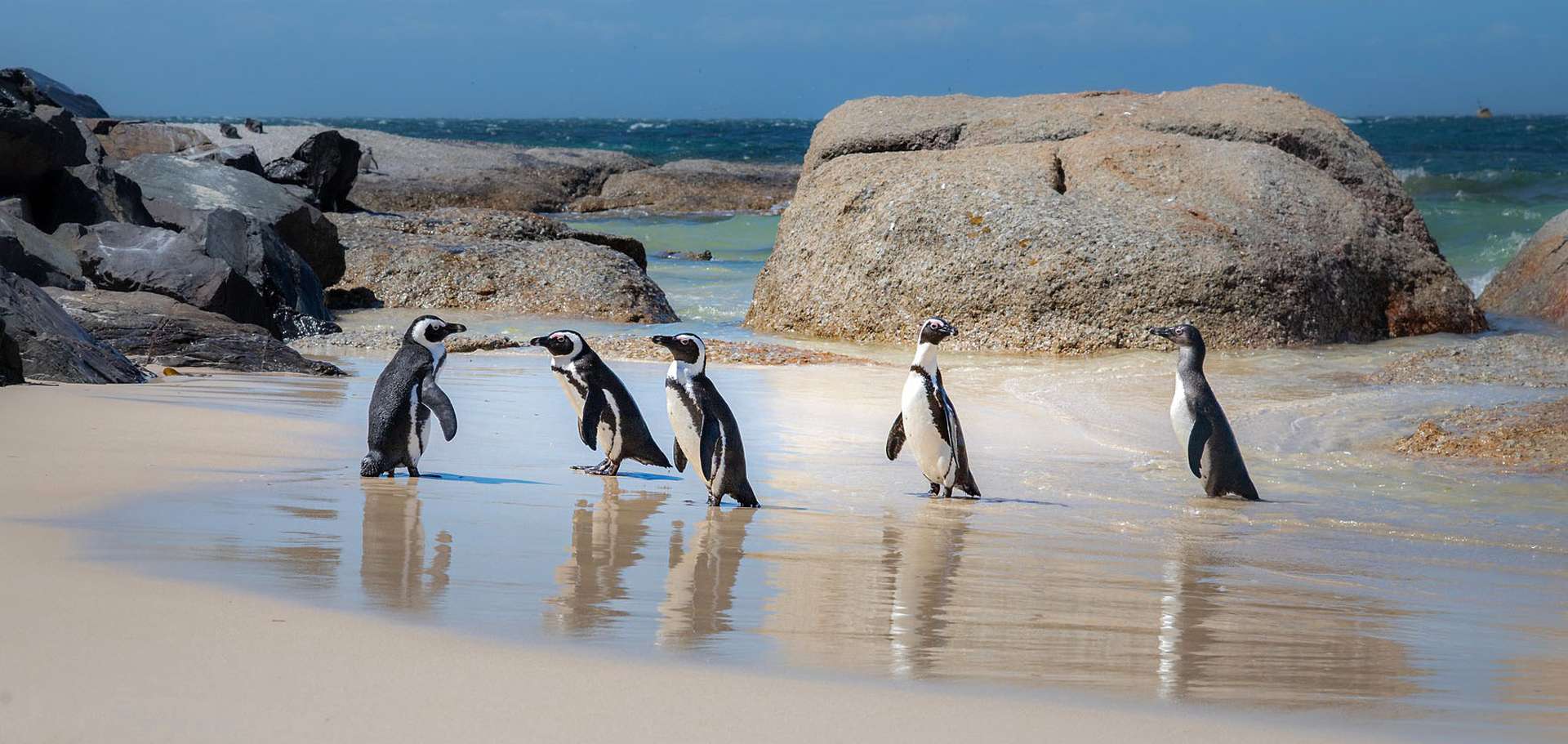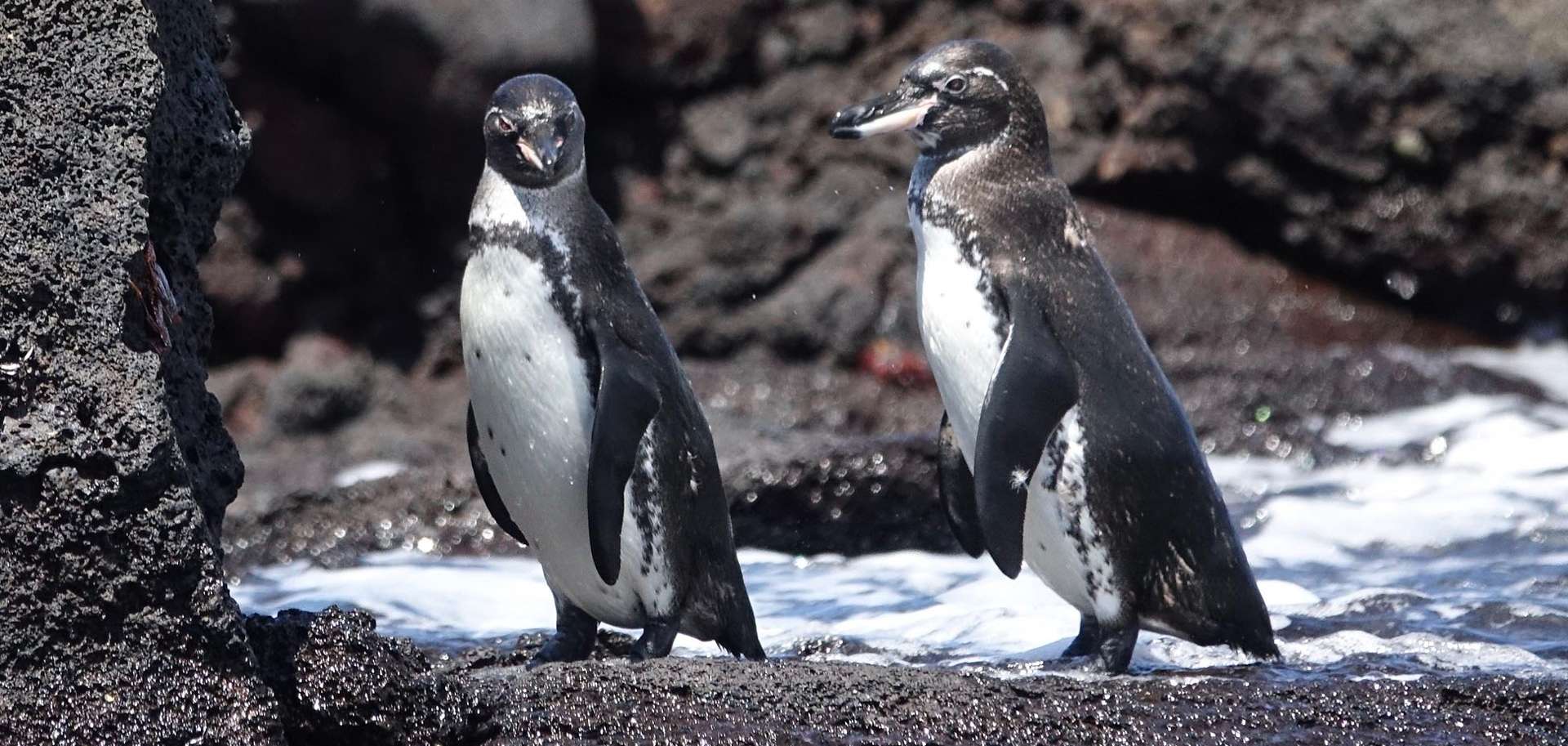Part of the reason that I’m so enthralled with Antarctica is because it’s one of the rare places on Earth that has never had an Indigenous population; in other words, there are no native human Antarcticans.
Of course, animals other than us have lived there for eons. Perhaps, the best known and most abundant are penguins. While most of the animals of the south polar region are seasonal visitors—albatrosses, other seabirds, seals, whales and a range of invertebrates—penguins remain year-round. They are the southernmost continent’s true natives.
Or so I assumed.
Now, however, it seems that along with the nature travelers who go to Antarctica every year, penguins, too, came from somewhere else.

University of California, Berkeley, researchers disproved the theory that the closely related emperor and king penguins were a “sister group” to the Adelie and gentoo penguins. Instead, they found that the emperor and king penguins are related to all other penguins.
Aussies and kiwis
For years, scientists believed that penguins originated in Antarctica. That is, until recently, when researchers from the University of California, Berkeley, studied the blood and tissue samples of 18 main species of penguins, spread across polar and tropical environments in the Southern Hemisphere. They used their genomes to look back at the evolution and diversification of penguins over time.
What they discovered was that penguins first evolved in Australia and in New Zealand. In their paper, which was published in the science journal Proceedings of the National Academy of Sciences on August 17, 2020, the researchers concluded that penguins arose in the temperate and cool, coastal regions of those two countries during the Miocene Epoch, about 22 million years ago—and not in Antarctica, as many scientists had thought.
Genetic evidence from the full genomes of the 18 penguin species indicates that over time, the ancestors of emperor and king penguins, the two largest species, split off from the other penguins and moved to sub-Antarctic and Antarctic waters; presumably to take advantage of abundant food resources. This supports the theory that emperor and king penguins are, indeed, a “sister group” to all other penguin lineages, which has long been debated among scientists.

Rockhopper penguins get their name from how they use their thick-skinned feet to hop around rocky terrain when they come up from the deep. They can swim fast enough to launch themselves out of the water to land on shores on their fat bellies. ©Falkland Islands, flickr
The other types of penguins are believed to have moved across the planet’s southern waters after the Drake Passage fully opened about 12 million years ago. This opening revved up the clockwise-moving Antarctic Circumpolar Current, allowing these flightless birds to swim with the ocean currents throughout the Southern Ocean and to populate both the cold, sub-Antarctic islands and the warmer, coastal areas of Africa and South America, where they were drawn to coastlines and remote islands with cold, nutrient-rich, upwelling water.
Adaptations and colonizations
Using powerful analysis techniques, the researchers from the University of California, Berkeley, were able to determine that several groups of penguins have interbred over the course of their evolutionary history. Through exchange of genetic material, penguins may have shared genetic traits that facilitated their diversification across the steep thermal and salinity gradients encountered in the Southern Ocean. The most hybridized are the rockhopper penguins and their close relatives—rockhoppers comprise a group of three penguins (the eastern, northern and southern rockhoppers) that prefer to get around by hopping on rocks instead of sliding on their bellies like most penguins—who experienced at least four introgressions (transfers of genetic information) over the course of millions of years.
The scientists also pinpointed genetic adaptions that allowed penguins to thrive in new and challenging environments, including changes in genes responsible for regulating body temperature, which allowed them to adapt to subzero Antarctic temperatures, as well as tropical temperatures near the equator; oxygen consumption that permitted deeper dives; and osmoregulation, so they could survive on seawater without the need to find fresh water. The lead researchers even recently discovered a new lineage of penguin that awaits scientific description.

Once extremely numerous, African penguins are declining rapidly due to a combination of several threats and are classified as endangered on the IUCN Red List of Threatened Species. Popular with tourists, they can be found along the coasts of Namibia and South Africa.
New analytical tools also helped the researchers infer the population sizes of ancient penguins going back about 1 million years. Most penguin species, they found, reached their greatest numbers as the world cooled 40,000 to 70,000 years ago during the last glaciation—many species prefer to breed on ice and snow—and some had a bump in population during the previous glaciation period 140,000 years ago. Two species, the gentoo and the Galapagos penguin, seem to have been declining in population numbers for at least the past 1 million years.
Today, penguins live in an incredibly vast range of thermal environments, from 48 degrees Fahrenheit in the waters around Australia and New Zealand (little, yellow-eyed and other crested penguins), down to negative temperatures in Antarctica (Adelie, chinstrap, emperor and gentoo penguins), and up to 79 degrees Fahrenheit in the Galapagos Islands (Galapagos and Humboldt penguins). They also inhabit the southern coasts of South America (Magellanic and southern rockhopper penguins), southern Africa (African penguins), subtropical regions (northern rockhopper penguins), and sub-Antarctic (king, gentoo and macaroni penguins) and Indian Ocean islands (eastern rockhopper penguins).
Antarcticans and channels
But despite their success in spreading widely throughout the Southern Hemisphere, many penguin colonies are now threatened. The animal’s ability to adapt to different environments and temperatures has taken place over millions of years. At the current rate that oceans are warming, penguins are not going to be able to change fast enough to keep up with the changing climate.

According to World Wildlife Fund, Galapagos penguins are the only penguin species found north of the equator and in the Galapagos. Unfortunately, they are threatened by bycatch, climate change and pollution. Introduced species, such as dogs, carry diseases that can spread to penguins, and cats pose a threat as predators. Past strong El Nino events have caused mortalities in colonies of up to 77 percent. ©Mike’s Birds, flickr
Breeding colonies of emperor penguins in Antarctica have had to relocate because of receding sea ice, while there have been two recent episodes of massive breeding failures of Adelie penguin chicks on the continent. Galapagos penguin populations are declining as warm El Nino events become more common. In New Zealand, populations of little and yellow-eyed penguins must be fenced off to protect them from the depredations of feral cats, while African penguins are declining drastically as the waters off southern Africa warm.
From the four-foot-tall emperor penguin to the foot-long little penguin, these unique, flightless birds swim in habitats from Antarctica to the equator—and, there’s no doubt, through the channels of our hearts.
And even though I know penguins came to the White Continent from Australia and New Zealand—and even though I’m aware there is no such thing—I still think of charismatic penguins as the original Antarcticans.
Here’s to finding your true places and natural habitats,
Candy

